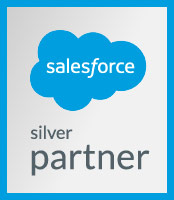Top 4 Strategies to Increase Salesforce Adoption
Deciding to make the move to Salesforce is a great choice, and your organization can reap many benefits from doing so. However, the reality is that many Salesforce implementations fail, and the primary cause of that failure is user adoption.
Many companies struggle to get their employees onboard with a new platform. In fact, according to CSO Insights, less than 40% of CRM customers have user adoption rates higher than 90%. Without successful adoption, you will struggle to achieve the positive ROI that drove the decision in the first place. Fortunately, companies can achieve high adoption rates with the right measures in place. Our certified Salesforce consultants have recommended their Top Four strategies to increase end- user adoption:
1. Prioritize Training
Salesforce is a robust platform, and we understand it can seem overwhelming, especially to brand new users! That is why we emphasize training through the entire implementation process. Without basic Salesforce knowledge, you can likely expect a low end-user adoption rate, so baking training into implementation is absolutely essential.
Fortunately, there are plenty of training options available to your team. Whether that’s directly with your implementation partner, a third-party training provider, or Salesforce Trailhead, you can set your employees up for success. We recommend a mix of both interactive 1-1 training and Trailhead courses.
It’s important to keep in mind that Salesforce is a journey. Your employees won’t understand every feature and solution from the get-go, and everyone learns at a different pace. We suggest starting with the Salesforce basics and ensuring each individual employee is comfortable with the functionality. From that point on, you can prioritize ongoing training based on the needs of each employee.
2. Crawl-Walk-Run
When you think about Salesforce as a journey, it also means you can’t get to the finish line in one day and you shouldn’t try. When discussing your implementation plan, try to think long-term. Yes, you can attempt to implement everything on day one, but you are increasing the risk of failure by doing so. Smaller, more focused projects are quicker, less expensive, and easier to roll out across organizations. By taking this route, your users will have less to adjust to and you’ll gain valuable insight as each preceding phase informs the next.
We strongly believe in taking a phased approach to Salesforce. Keeping it simple allows your team to grow with the platform instead of constantly playing catch up, this is a recipe for poor adoption. After all, Salesforce should be making your employees jobs easier, not harder.
We recommend taking a strategic, long-term approach. Discuss your options with your implementation partner for what a Phase 1, 2, and 3 project could look like for your team.
3. Create a User Adoption Plan
Before you go-live on Salesforce, we recommend creating a user adoption plan to set expectations for both your executive team and end-users. Here are some things to consider:
- Show Executive Buy-in: Before making any decisions, your entire executive team should be supportive and willing to make a change. It’s important that they lead by example and communicate the importance of the change.
- Bottom-up Feedback: We recommend involving the end-user in relevant implementation discussions. Soliciting feedback in early stages will likely increase their Salesforce usage when the time comes.
- Establish a Salesforce Champion: An internal champion can help upper management bridge the adoption gap and act as a resource to their fellow team members.
- Track and Manage the Process: Consider monitoring the progress of individual users. Accountability is key in the early stages of a roll out, and ensuring that users know what is expected can help drive initial adoption until business results become apparent. Certain metrics, such as number of logins or contacts created, can help identify where support is needed.
4. Live in Your Solution
“If it’s not in Salesforce it doesn’t exist”- this is a common mantra within the Salesforce ecosystem, and with good reason. In other words, in order to get the most out of Salesforce you have to learn to rely on it. That doesn’t mean checking it every hour to see what’s happening, it means learning to make Salesforce a central part of how you work. Managers should be using Salesforce to guide meetings and salespeople should be living in Salesforce throughout their days, not updating it at the end. The difference may seem minor, but it has a huge impact on whether Salesforce will work for your company or not. Businesses need to keep this in mind when designing Salesforce, working to strike a balance between usability and reporting.
Learn about how we help Companies achieve Salesforce Success.
CONTACT US
20 Eglinton Ave W., Suite 1004, Toronto, ON M4R 1K8


